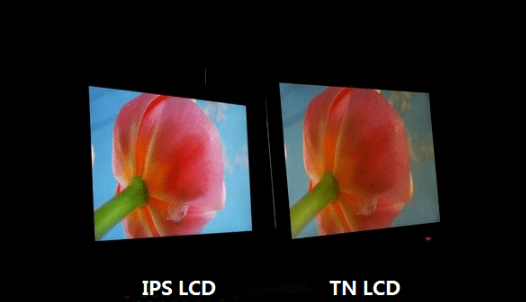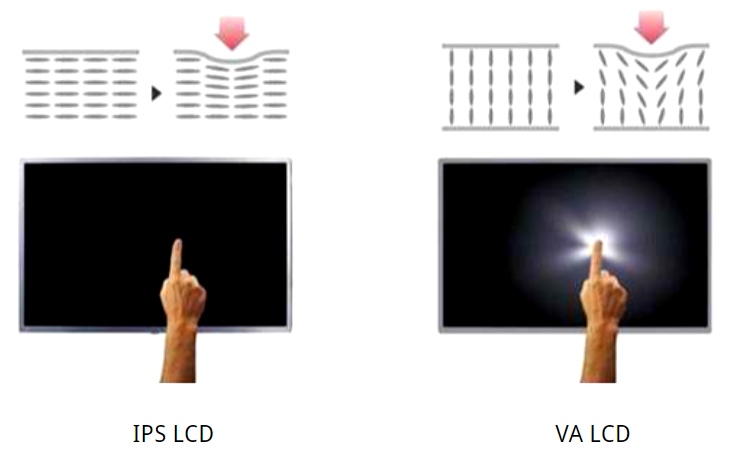
TN LCD
Twisted Nematic (TN) LCD is a common soft screen that can press the water ripple by hand. This is one of the LCD panels used earlier.
The advantages of TN LCD
- Its technology is mature and widely used in the market
- Good black levels
- The output gray class number is small, and the liquid crystal molecules deflect faster
- Fast response time, generally has a response time of 1 ms
The disadvantages of TN LCD
- Small viewing angle
- The display color is not bright and may be slightly whitish
IPS LCD
In-Plane Switching (IPS) LCD is a liquid crystal panel technology introduced in 2001, commonly known as “Super TFT”.
The advantages of IPS LCD
- High viewing angle (up to 178 °)
- Fast response
- Accurate color restoration
- Low price
The disadvantages of IPS LCD
- Light leakage is relatively serious
- and the black purity is not enough, which is slightly worse than PVA
- It is necessary to rely on the compensation of optical films to achieve a better black color
The screen of the IPS LCD is relatively “hard” and won’t deform in the water pattern with a gentle stroke of the hand, so it is also known as a hard screen.
It eliminates the blurring and water-spreading phenomena that occur when traditional LCD screens are subjected to external pressure and shaking.
When playing extremely fast pictures, there will no longer be residual shadows and trailing phenomena.
IPS panels are very popular in industries such as industry, healthcare, and automotive.

VA LCD
Vertical alignment (VA) represents a vertical arrangement in which the liquid crystals are vertically arranged perpendicular to the surface of the substrate.
It can be subdivided into MVA (multi-domain vertical alignment) and PVA (patterned vertical alignment).
The advantages of VA LCD
- Ultra-wide viewing angle
- High contrast
- The display screen is more delicate
The disadvantages of VA LCD
- Color cohesion is not very good in dynamic images
- High-speed images are prone to drag shadows
VA LCD is mostly used for high-end commercial LCDs and text offices.

Conclusion
In summary, TN LCDs are best for gaming and other fast-paced activities, IPS LCDs are best for tasks that require color accuracy, and VA LCDs are best for tasks that require high contrast. However, for general use, IPS LCDs are often considered the most well-rounded option, as they offer a good balance of color accuracy, viewing angles, and response times.
Color accuracy: IPS > VA > TN
Response time: TN > IPS > VA
Viewing angle: IPS > VA > TN
Contrast: VA > IPS > TN

